
Lifestyle M Interior Design
DIY Wood Trim Accent Walls: Elevate Your Home Decor on a Budget
Are you looking for a simple and cost-effective way to elevate your home decor? Consider adding a DIY wood trim accent wall. Not only is it a unique and eye-catching feature, but it also adds warmth and texture to any room. In this article, we’ll discuss the benefits of adding an accent wall, the different types of wood species for trim, how to choose a color palette, creating texture and contrast with wood trim, and design ideas for different styles of homes. We’ll also provide a step-by-step guide for creating your own DIY wood trim accent wall and offer tips for a successful project.
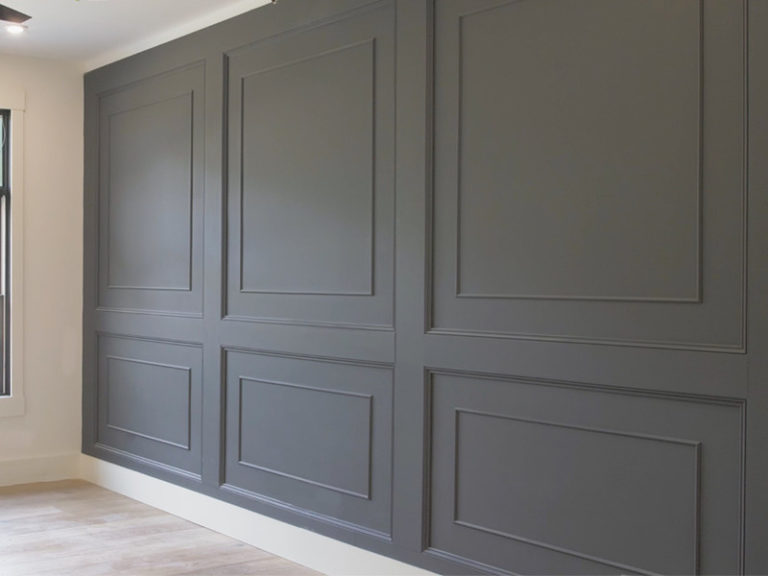
Benefits of Adding an Accent Wall to Your Home Decor
An accent wall is a great way to add visual interest and depth to a room without committing to a full redesign. It’s also a budget-friendly option that can be done in a short amount of time. The addition of a wood trim accent wall creates texture and warmth that can’t be achieved with paint alone. It’s a unique feature that can be customized to fit any style, from rustic to modern.
In addition to being aesthetically pleasing, accent walls can also serve a functional purpose. They can be used to highlight a focal point in a room, such as a fireplace or piece of artwork. They can also be used to create a sense of separation between different areas in an open-concept space.
The Different Types of Wood Species for Trim
When it comes to choosing the right wood species for your trim, there are many options to consider. Each species has its own unique characteristics, such as grain pattern, color, and texture. Some popular options include:
- Pine: A softwood that is easy to work with and has a straight grain pattern. It’s a popular choice for trim due to its affordability and availability.
- Oak: A hardwood that is known for its durability and strength. It has a tight grain pattern and ranges in color from light to dark.
- Maple: A hardwood that is known for its uniform texture and light color. It’s a popular choice for modern and minimalist design styles.
- Cherry: A hardwood that is known for its rich, warm color and unique grain pattern. It’s a popular choice for traditional and rustic design styles.
When choosing a wood species for your trim, consider the overall style and color palette of your room. You want to choose a species that complements the existing decor and creates a cohesive look.
Choosing a Color Palette for Your Accent Wall
Once you’ve chosen your wood species, it’s time to consider the color palette for your accent wall. There are many options to choose from, but some popular choices include:
- Neutral colors: Shades of white, beige, and gray are popular choices for accent walls. They create a clean and modern look that complements a variety of design styles.
- Bold colors: If you’re looking to make a statement, consider a bold color for your accent wall. Shades of red, blue, and green can add energy and vibrancy to a room.
- Earth tones: Shades of brown, tan, and green create a warm and inviting atmosphere. They’re a popular choice for rustic and farmhouse design styles.
When choosing a color palette for your accent wall, consider the existing decor in your room and choose a color that complements it. You want to create a cohesive look that ties everything together.
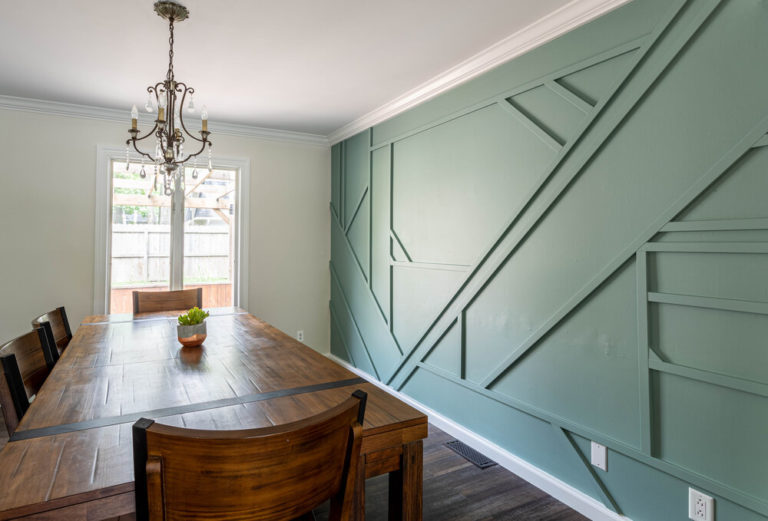
Creating Texture and Contrast with Wood Trim
Like I mentioned befor, one of the benefits of a wood trim accent wall is the texture it creates. To enhance this texture further, consider using different widths and depths of trim pieces. This will create a more dynamic look that adds visual interest to the wall.
Another way to create contrast with wood trim is to use different finishes. For example, you could use a matte finish on the wall and a glossy finish on the trim pieces. This creates a subtle contrast that adds depth to the wall.
Rustic Design Ideas for Your Wood Trim Accent Wall
If you’re looking to create a rustic look in your home, a wood trim accent wall is the perfect addition. Consider using reclaimed wood for your trim pieces to add to the rustic feel. You could also use a mix of different wood species to create a more eclectic look.
To enhance the rustic feel, consider adding decor pieces that complement the wood trim. This could include vintage signs, metal accents, and natural textiles.
Modern Design Ideas for Your Wood Trim Accent Wall
A wood trim accent wall can also be incorporated into a modern design style. Consider using a light-colored wood species, such as maple or birch, to create a clean and minimalist look. You could also use a simple trim pattern, such as a grid or herringbone, to add to the modern feel.
To further enhance the modern look, consider adding decor pieces that are simple and trendy. This could include geometric shapes, metallic accents, and bold abstract artwork.
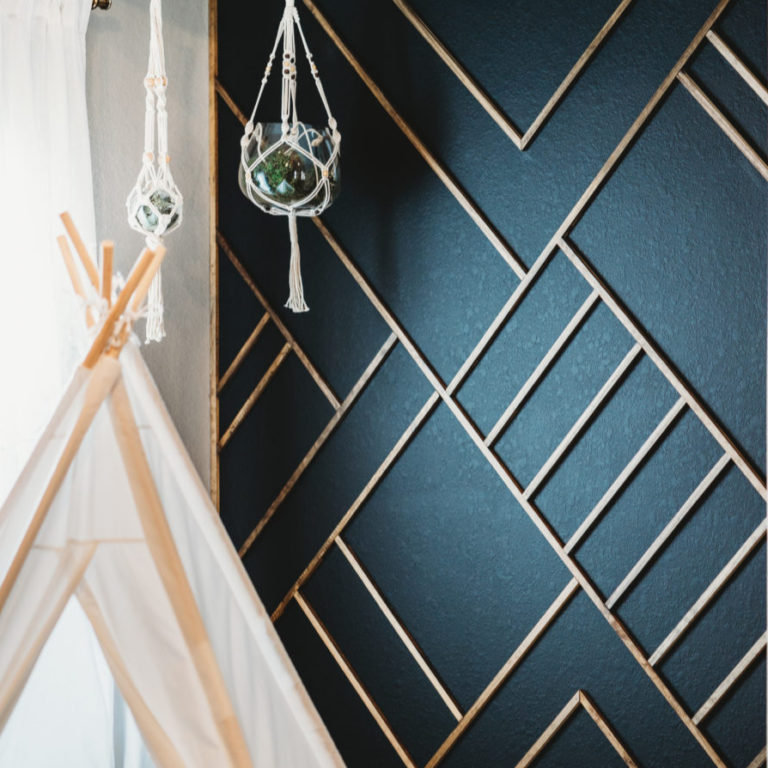
Farmhouse Style Design Ideas for Your Wood Trim Accent Wall
If you’re a fan of the farmhouse design style, a wood trim accent wall is the perfect addition to your home. Consider using a medium to dark wood species, such as oak or cherry, to create a warm and inviting atmosphere.
To enhance the farmhouse feel, consider adding decor pieces that are vintage or distressed. This could include antique signs, rustic frames, and natural textiles.
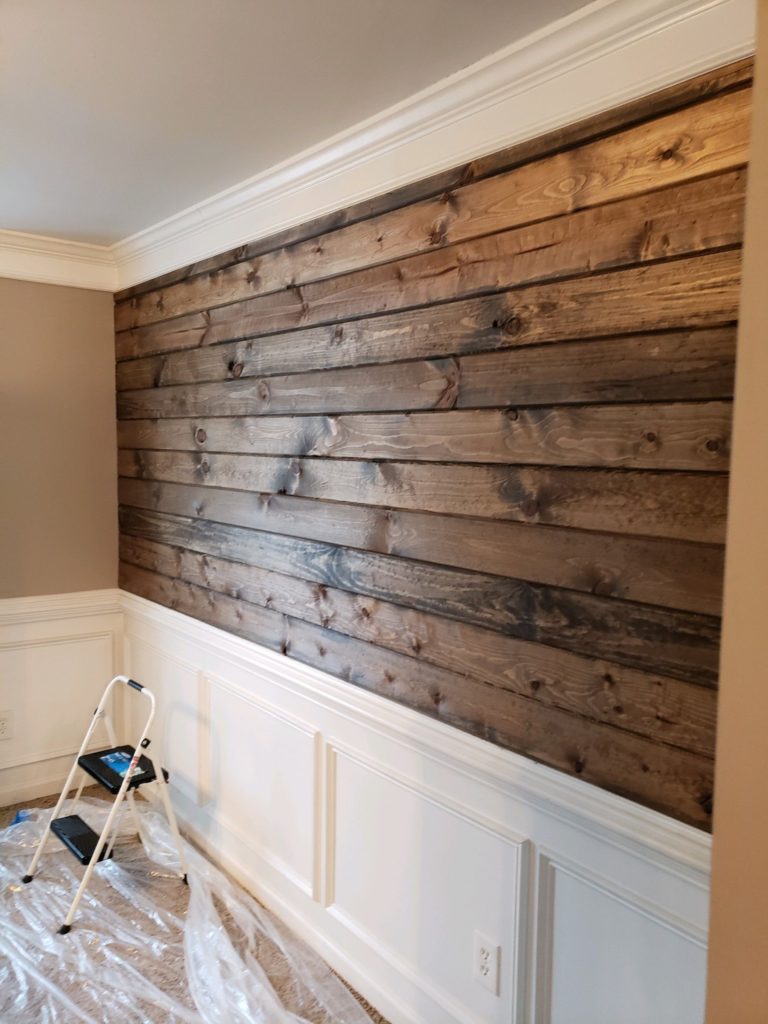
Mid-century Modern Design Ideas for Your Wood Trim Accent Wall
A wood trim accent wall can also be incorporated into a mid-century modern design style. Opt for a pattern that is more traditional, like rectangle panels with elegant curves.
To get that mid-century modern look, consider adding decor pieces that are clean and simple. This could include geometric shapes, metallic accents, and vintage artwork.
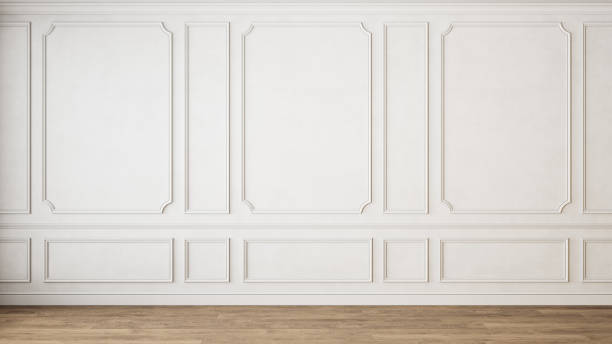
Scandinavian Design Ideas for Your Wood Trim Accent Wall
If you’re a fan of the Scandinavian design style, a wood trim accent wall is the perfect addition to your home. Consider using a light-colored wood species, such as maple or birch, to create a clean and minimalist look. You could also use a simple trim pattern, such as a grid or herringbone, to add to the modern feel.
To enhance the Scandinavian feel, consider adding decor pieces that are simple and functional. This could include natural textiles, such as wool and linen, and simple decor accents, such as candles and plants.
Step-by-Step Guide to Creating Your Own DIY Wood Trim Accent Wall
Now that you have some design ideas for your wood trim accent wall, it’s time to get started on your DIY project. Here’s a step-by-step guide to help you along the way:
- Measure your wall: Measure the length and height of your wall to determine how much wood trim you’ll need.
- Choose your wood species: Choose a wood species that complements your existing decor and fits your design style.
- Choose your color palette: Consider the existing decor in your room and choose a color palette that complements it.
- Plan your trim pattern: Use painter’s tape to create a rough outline of your trim pattern on the wall.
- Cut your trim pieces: Use a saw to cut your trim pieces to the desired length.
- Attach the trim pieces: Use a nail gun or wood glue to attach the trim pieces to the wall.
- Fill in the nail holes: Use wood filler to fill in any nail holes or gaps in the trim.
- Sand the trim: Sand the trim pieces down to create a smooth surface.
- Paint or stain the trim: Choose a paint or stain that complements your color palette and apply it to the trim pieces.
- Enjoy your new accent wall: Step back and admire your handiwork!
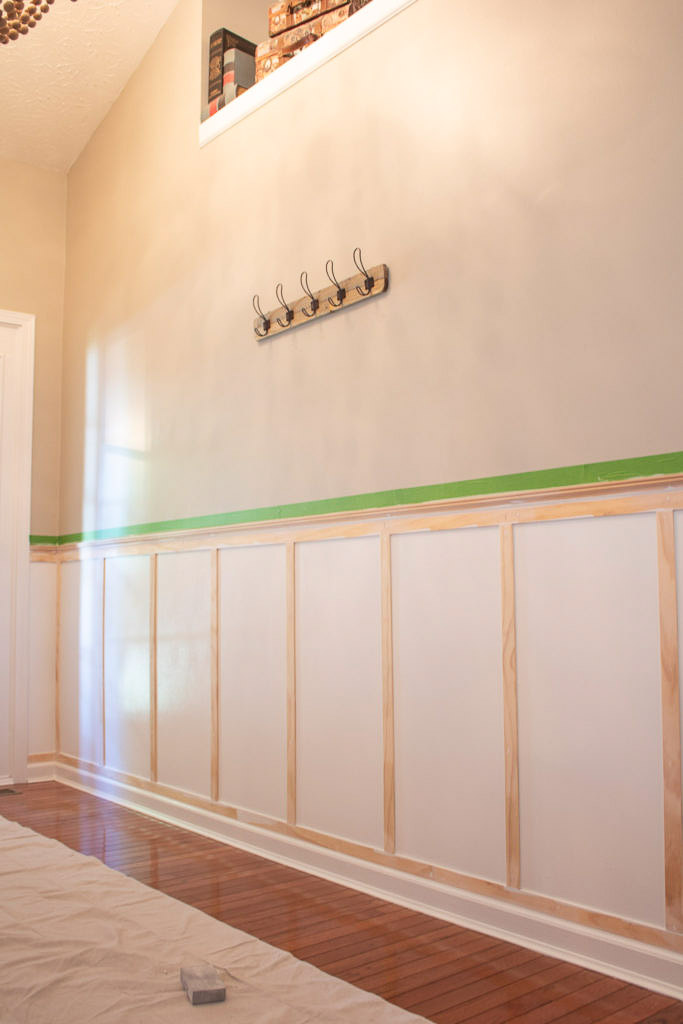
Tips and Tricks for a Successful DIY Project
Creating a wood trim accent wall can be a fun and rewarding DIY project. Here are some tips and tricks to help you along the way:
- Measure twice, cut once: Make sure you measure your wall accurately before cutting your trim pieces to avoid any mistakes.
- Use a level: Use a level to ensure that your trim pieces are straight and level.
- Use wood glue: In addition to nails, use wood glue to secure your trim pieces to the wall for added stability.
- Sand before painting: Make sure you sand your trim pieces down before painting or staining to create a smooth surface.
- Use a paint sprayer: Consider using a paint sprayer to apply paint or stain to your trim pieces for a more even finish.
Maintenance and Care for Your Wood Trim Accent Wall
To keep your wood trim accent wall looking its best, it’s important to take proper care of it. Here are some tips for maintenance and care:
- Dust regularly: Use a soft, dry cloth to dust your accent wall regularly.
- Avoid water damage: Avoid placing anything wet or damp against your accent wall to prevent water damage.
- Repair any damage: If you notice any damage to your accent wall, such as scratches or dents, repair it as soon as possible to prevent further damage.
Conclusion
A wood trim accent wall is a simple and cost-effective way to elevate your home decor. By choosing the right wood species, color palette, and trim pattern, you can create a unique and eye-catching feature that adds warmth and texture to any room. With a little bit of patience and some DIY skills, you can create a beautiful wood trim accent wall that you’ll enjoy for years to come.
